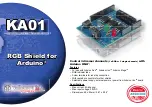
Chapter 3 OEM7 Receiver Operation
OEM7 Installation and Operation User Manual v4
66
RTK ASSIST is available as soon as the rover receiver has at least one valid RTK solution and
has received the RTK ASSIST correction data. If an RTK correction outage occurs, then RTK
ASSIST will maintain RTK mode until the subscription-permitted RTK ASSIST duration is
exceeded. A shorter, user-defined RTK ASSIST time out can also be set using the
RTKASSISTTIMEOUT
command. Normal RTK operation will seamlessly resume if RTK cor-
rections are restored at any point while RTK ASSIST is operating.
RTK ASSIST will report the RTK solution type that was present before RTK corrections were lost,
unless the estimated solution standard deviation exceeds the threshold set by the
RTKINTEGERCRITERIA
command. If this occurs, then integer RTK solutions will be down-
graded to their float RTK equivalent.
RTK ASSIST is enabled by default, but can be disabled using the
RTKASSIST
command. To mon-
itor the status of RTK ASSIST, view the
RTKASSISTSTATUS
log.
Refer to the
OEM7 Commands and Logs Reference Manual
for information about the commands
and logs referenced in this section.
RTK ASSIST typically provides 4 cm accuracy. However, if the RTK outage occurs during
the first 30 minutes of receiver operation, the position accuracy provided by RTK ASSIST
may be lower.
Additional information about enabling and using RTK ASSIST is available in the RTK
ASSIST Application Note (available from our website:
tel.com/assets/Documents/Bulletins/APN-073-RTK-ASSIST.pdf
).
3.10 Transferring Time Between Receivers
The
ADJUST1PPS
command is used as part of the procedure to transfer time between receiv-
ers. The number of Pulses Per Second (PPS) is always set to 1 with this command. It is typically
used when the receiver is not adjusting its own clock and is using an external reference fre-
quency.
The
TIMESYNC
log is also used to synchronize time between receivers. It contains a time
status field that may show COARSE or FINE, among others. For a complete list of the time status
values and definitions, refer to the GPS Reference Time Status section in the
on the next page provides details on the time transfer procedure.
Terms used in the procedure are defined in
on the next page. Refer also to the
ADJUST1PPS
command and the
TIMESYNC
log in the
OEM7 Commands and Logs Reference
.
3.10.1 GPS to Receiver Time Synchronization
Receiver time synchronization with GPS time does not occur until the receiver locks onto the
first satellite. The GPS L1 signal has two main streams of data modulated on the carrier. These
data streams are the C/A code (1.023 MHz rate) and the P(Y) code (10.23 MHz rate). Addi-
tionally, a navigation message (at a 50 Hz rate) contains GPS satellite data including the eph-
emeris, clock corrections and constellation status. This navigation message is encoded on both
the C/A and P(Y) codes. The navigation message is transmitted via individual subframes and
















































